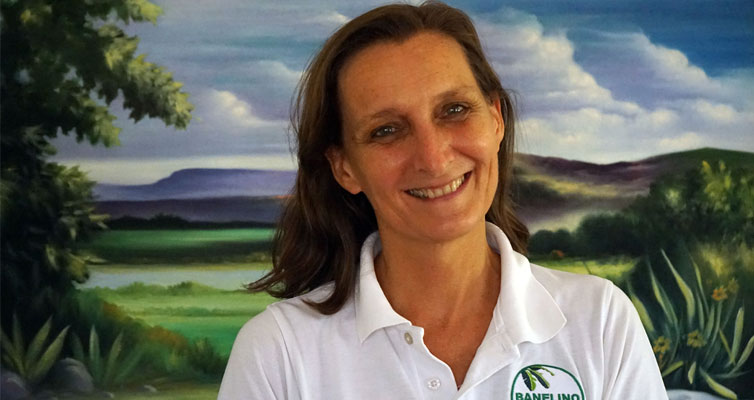‘Biodiverse farms will be better prepared for climate change.‘

Ms Peña, how did you convince the small farmers in the cooperative to boost biodiversity?
Paradoxically, a natural disaster paved the way for us. We had massive floods in the region in 2016, which destroyed 40 per cent of our plantations: bananas rot after just 36 hours under water. The only trees that survived were the coconut palms we had recently planted. They can easily survive a month under water. That was when the farmers saw with their own eyes the value of diverse agriculture. And that was the first step.
What support did you receive from GIZ?
Initially, we lacked the necessary know-how. How do I measure biodiversity? And how do I publicise the new approach so that I can attract business? That’s where GIZ came in with the biodiversity check.
How does the biodiversity check work?
It starts with the farmer completing a questionnaire. Their finca is then mapped both at ground level and from the air, using a drone. Then everyone involved draws up an action plan, which may include things like planting hedges as wind-breaks or acquiring bees to help with pollination. A GIZ expert supports implementation of the plan. It’s all voluntary, with no obligation to take part, and unlike existing quality schemes, there are no sanctions. That means everyone is much more open to trying things out.
Will the biodiversity check also have an impact on prices?
We hope it will: there is stiff price competition on the bananas we sell to European discounters. The farmers are already seeing tangible benefits, though, with their production costs falling and their earnings growing. And for the cooperative, these changes are also an investment in the future. Climate change will hit agriculture hard. But biodiverse farms will be better prepared for it.
akzente 9/2021
akzente-story ‘Nature’s bounty‘
